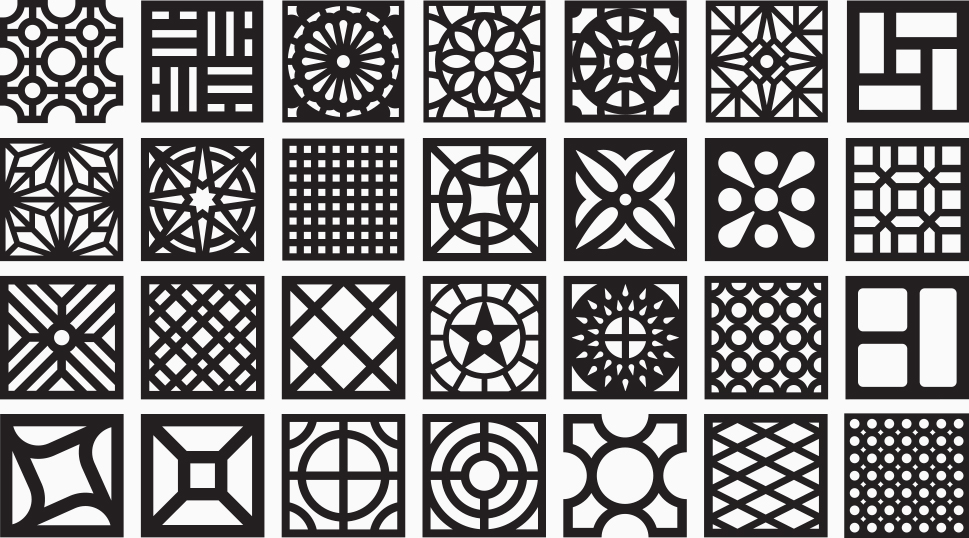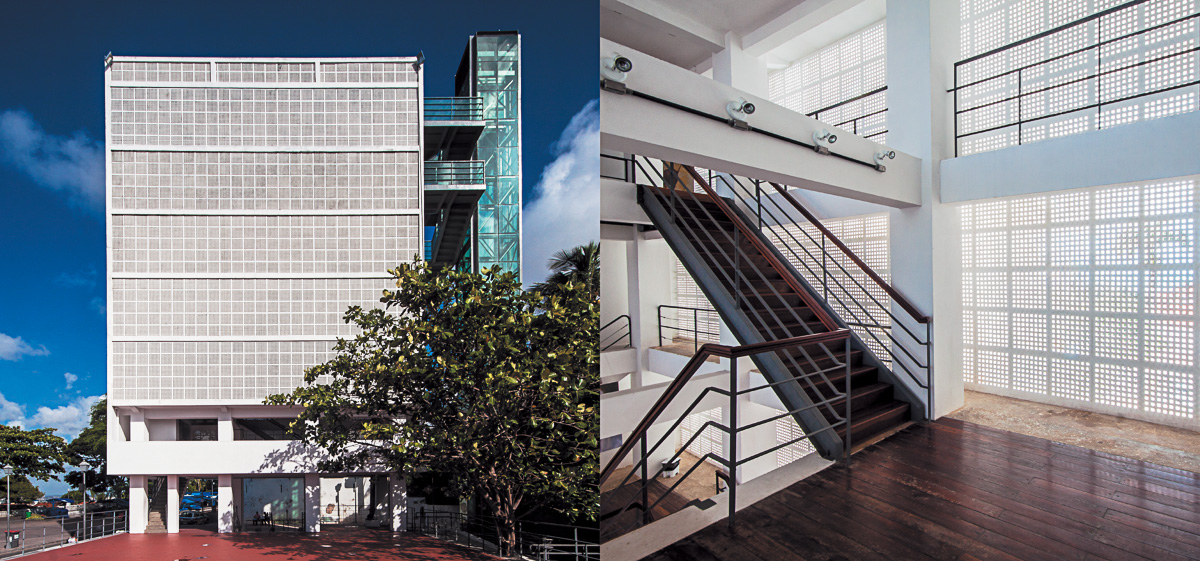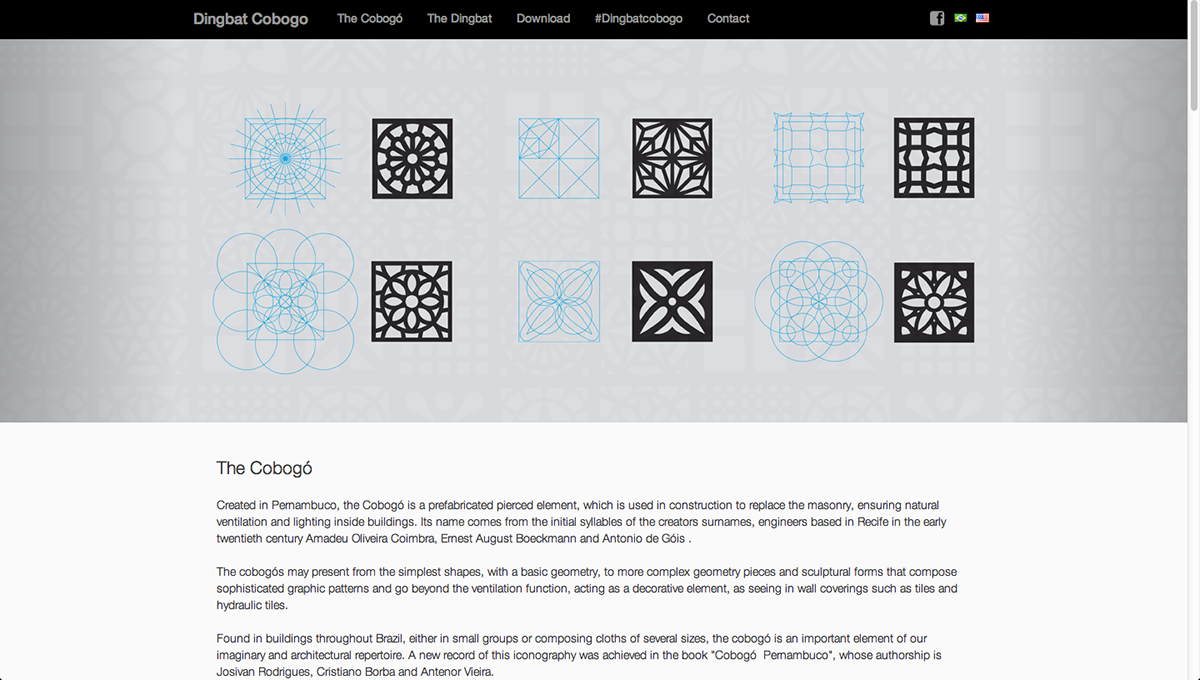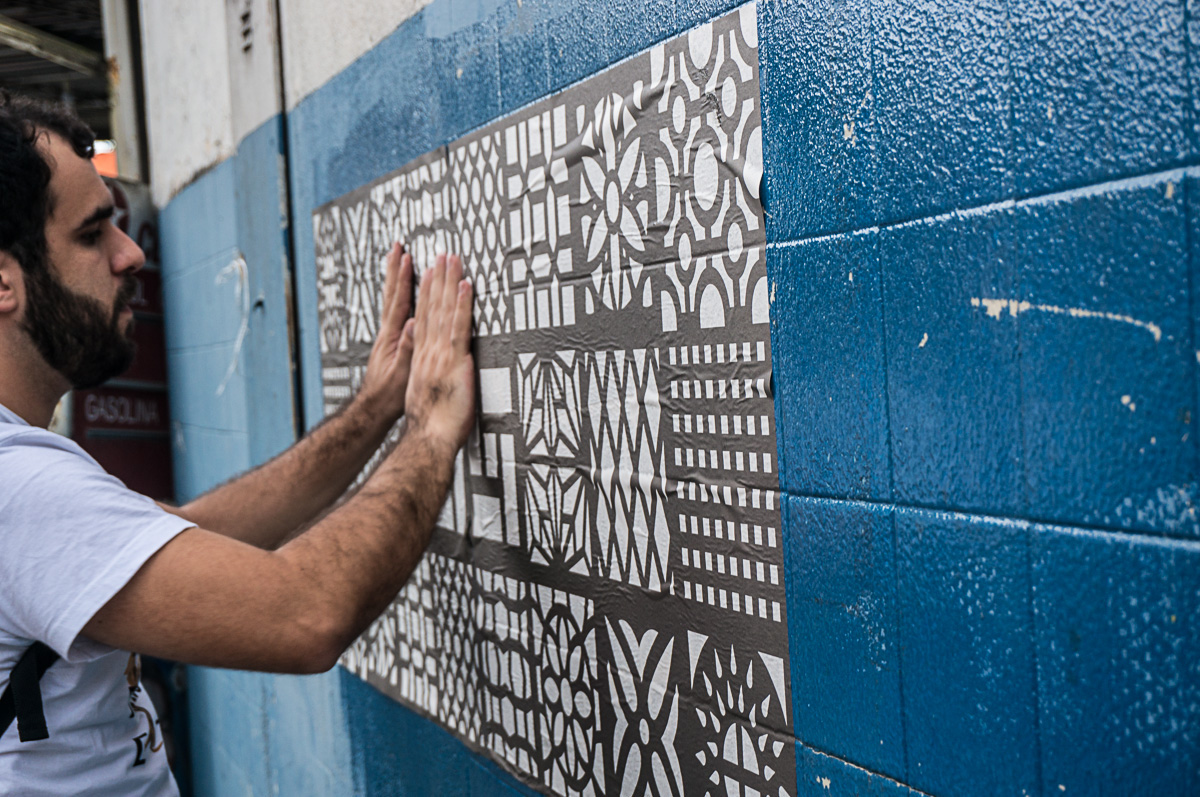
The Cobogó is the inspiration for the digital font Dingbat Cobogó designed by the brazilian graphic designer Guilherme Luigi. The symbols were created from the synthesis of pierced elements found in photographs by Josivan Rodrigues for his book Cobogó of Pernambuco. Both have resources from the State Cultural Incentive Fund – FUNCULTURA.
Created in Pernambuco, the Cobogó is a prefabricated pierced element, which is used in construction to replace the masonry, ensuring natural ventilation and lighting inside buildings. Its name comes from the initial syllables of the creators surnames, engineers based in Recife in the early twentieth century Amadeu Oliveira Coimbra, Ernest August Boeckmann and Antonio de Góis .
The cobogós may present from the simplest shapes, with a basic geometry, to more complex geometry pieces and sculptural forms that compose sophisticated graphic patterns and go beyond the ventilation function, acting as a decorative element, as seeing in wall coverings such as tiles and hydraulic tiles.







The digital font Dingbats Cobogó features 36 symbols in positive and negative versions. Available for free download through the site dingbatcobogo.com.br, the font can be used in any program with a text editor. “The intention of the project is to popularize the access to this graphic city to the common use besides preserving its memory”, says Luigi. One of the possible uses, the wheat paste, was applied by Guilherme in his city.







Idealization, Executive Production and Graphic Design _ Guilherme Luigi
Research and Photos _ Josivan Rodrigues
Press Office _ Eva Duarte
Web Designer _ Bruno Barros
Graphic Design Intern _ Guilherme Lira



